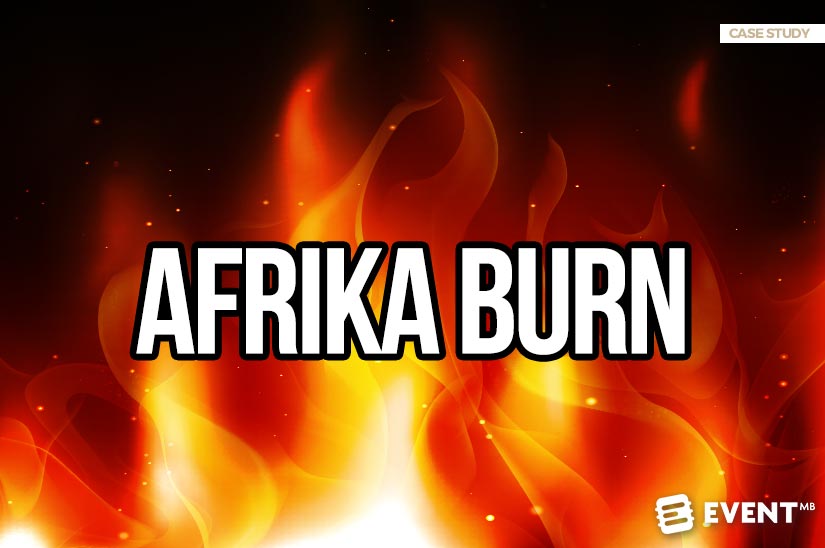Skift Take
Leaving No Trace
This is a case study from IMEX Group. More information about Event Manager Blog’s case studies.
Do you believe in the butterfly effect, in which a small change can have epic consequences for your event? Well, if you don’t, here’s a story about a humble, almost run-of-the-mill encounter that becomes a transformative event, the legacy of which changes the lives of hundreds of thousands of people.
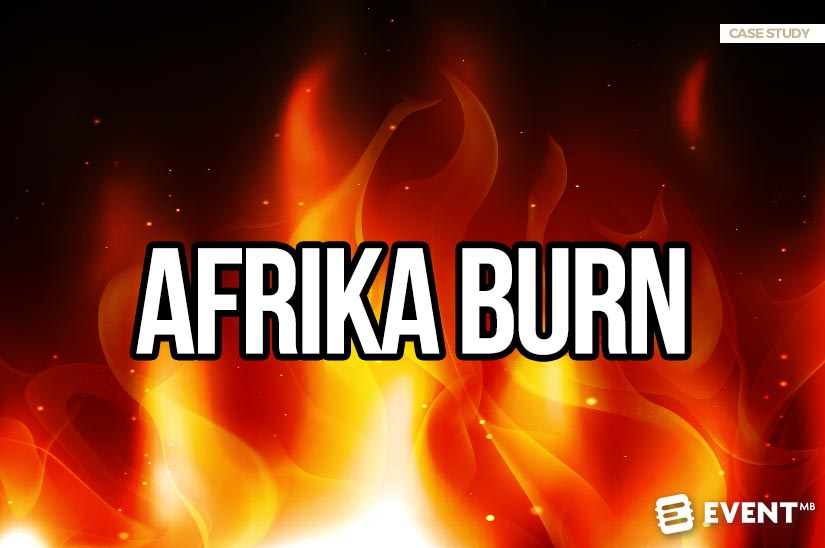
It begins in San Francisco in 1986, with two men dragging an effigy to Baker Beach with the intention of burning it. On the way, they meet a party of Solstice celebrants, who join them. It ends with everyone dancing around the burning effigy.
It was this chance encounter that became the annual transformative art, performance and survival event known as Burning Man, which has since inspired people from around the world to create their own “Burn.”
Two such people, Monique Schiess and Paul Jorgenson, helped organise the South African event, AfrikaBurn, which launched in 2007 and is now in its 12th year. There’s a life-changing quality to it. When participants were surveyed last year, 90% of the survey sample said that, after attending AfrikaBurn, they felt like they “could take on anything”.
Read on, if you want to create an event:
- So experiential, it changes the lives of its participants
- With an open space where self-expression and creativity rule
- Where respect for individual and collective achievements is restored
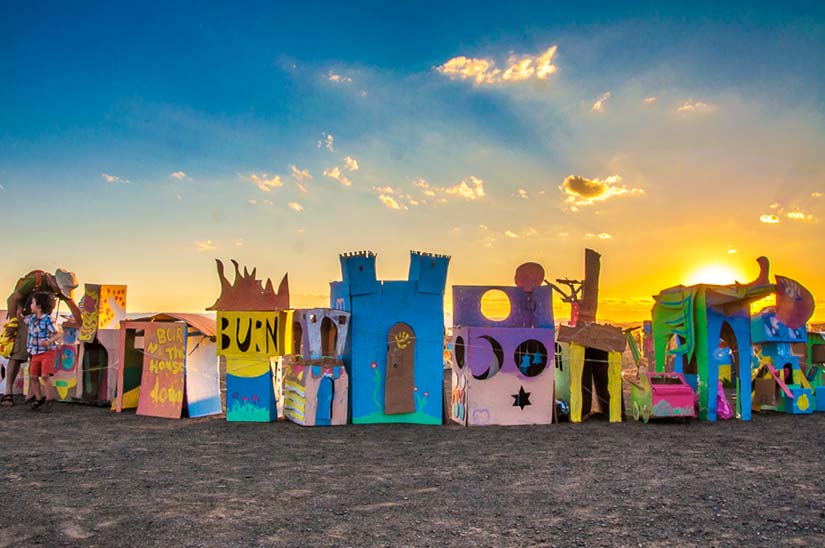
Photo credit: Sean Furlong
About the Event: What is AfrikaBurn?
Each year, under the savage desert conditions of South Africa’s Tankwa Karoo, a community made up of volunteers, artists and other participants arrive to build Tankwa Town from the ground up. According to Monique Schiess (one of the event’s founders) Tankwa Town is a unique space where participants practice radical self-expression.
Many participants take it to the limit. Some create theme camps that serve as smaller villages and knowledge centres within Tankwa Town’s city plan; others build complicated works of art and performances, while still others create a fleet of wacky, thematic vehicles (known as Mutant Vehicles) that keeps the element of playfulness alive and active during the Burn.
In the spirit of Burning Man, no one can buy or sell anything during the week of the event, the only item for sale is ice (to keep food from going bad). Interestingly, encouraging everyone to follow the legacy principles of gifting (giving gifts without expecting anything in return) and decommodification are among the festival’s greatest challenges. Only the basics of infrastructure are provided: toilets, roads, signage, medics, health and safety officers and an airstrip. In setting the conditions of the Burn, AfrikaBurn seeks to encourage participants to discover, exercise and rely on their inner resources.
Ultimately, after a week of frenetic outpouring of artistic expression that culminates in the burning of the event’s San Clan sculpture, all traces of Tankwa Town are removed, returning the desert back to its original state and respecting the environment. It’s a massive operation to leave no footprint but is achieved meticulously, even down to removing the last false eyelash.
We know from firsthand experience and photos that significant waste is now an unbecoming element of today’s festival scene. Having a zero-waste objective is something other events — and festival planners — would do well to emulate.
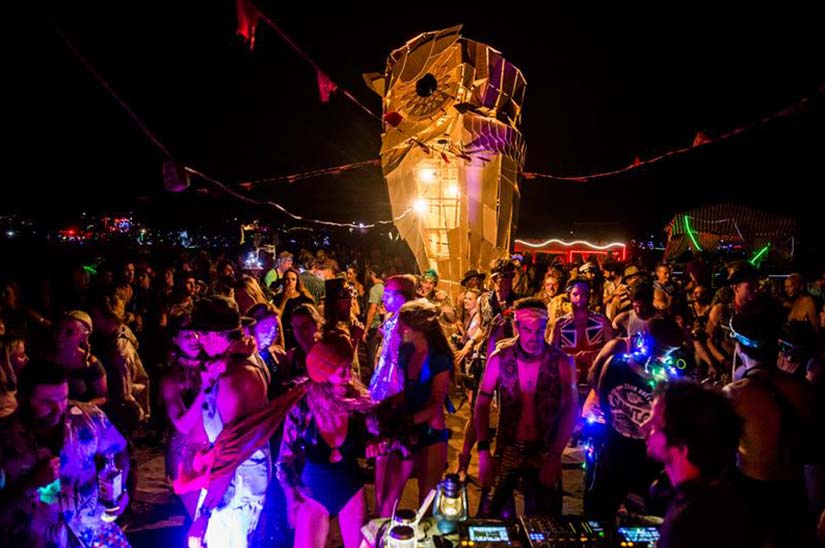
Photo credit: Jonx Pillemer
Question: How would you:
- Hold a 6-day arts festival
- With 13,000 participants
- Oversee 133 theme camps, 75 artworks, 30 performances, 115 mutant vehicles, 27 “burns”
- In the middle of a harsh environment, into which everything life-sustaining must be brought…
- And then removed, along with the detritus of habitation, leaving no trace
- With a budget of 7,023,803 Rand project expenses for the 2016 Burn (approx. US $591,900.62)
- Based primarily on ticket sales — no on-site sponsorships, merchandising or F&B outlets?
Perhaps, more importantly, why would you try?
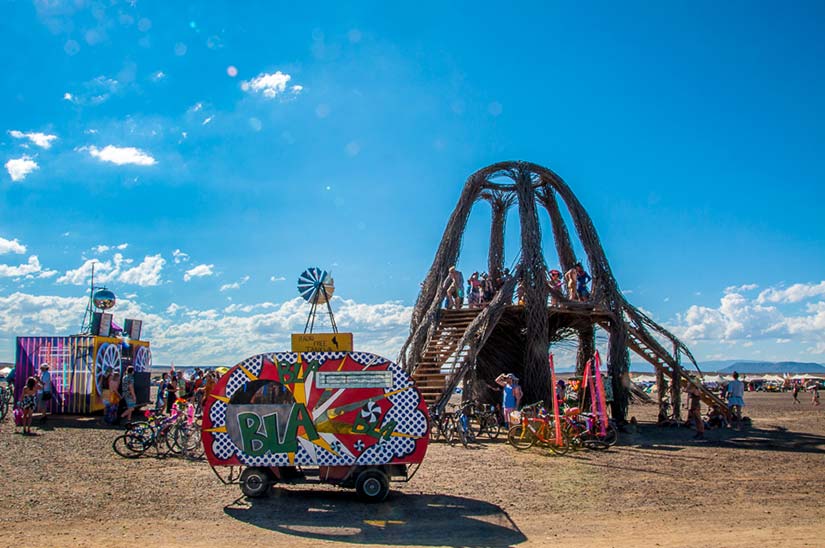
Photo credit: Sean Furlong
Why?: What made them do it?
Monique had been disappointed by civic festivals that, having begun with idealistic motives, became commercialised and deflected from the original intentions. AfrikaBurn’s creators envisioned a festival that would have an archetypal culture with it’s “taproot in anarchy.” A culture that, according to Schiess, would be created from the bottom up; where the participants themselves determined the culture and how it would be organised. They pictured and communicated the idea of AfrikaBurn as a tool for people to access their creativity and inventiveness, as well as a potential vector for social change.
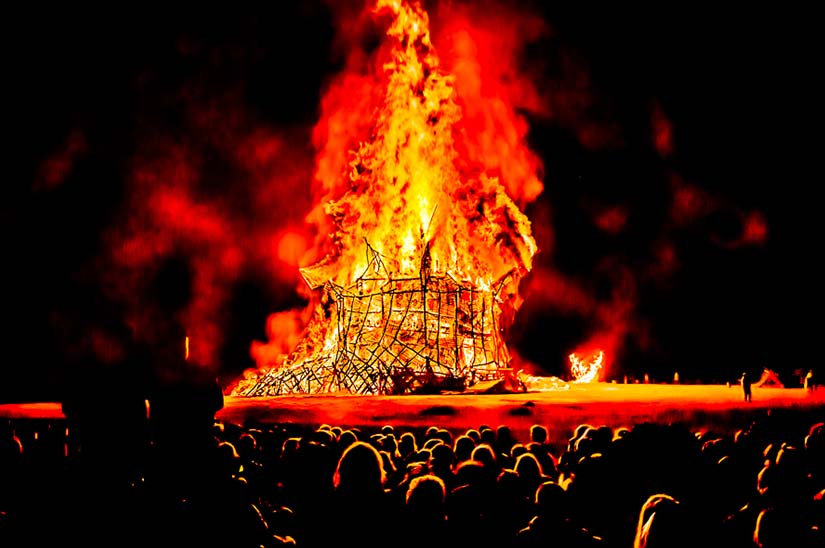
Photo credit: Sean Furlong
Like Burning Man, the participants of AfrikaBurn are guided by these 10 principles:
- Radical Inclusion
- Gifting
- Decommodification
- Radical Self-reliance
- Radical Self-expression
- Communal Effort
- Civic Responsibility
- Leaving No Trace
- Participation
- Immediacy
To these, AfrikaBurn has added an 11th principle, “Each one, teach one.” With these principles (which will be placed in context later) in mind, AfrikaBurn each year aims to be an experimental, participant-created movement.

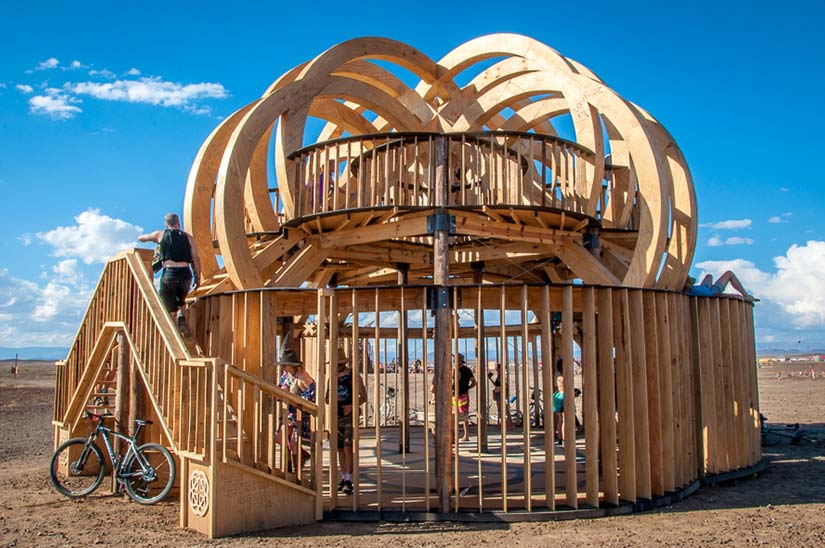
Photo credit: Sean Furlong
The First Time
The challenge of launching any new event is convincing the potential participants that it isn’t pie-in-the-sky. Few South Africans had been to Burning Man (it was on the other side of the world) or were even familiar with the concept. For Schiess, convincing people to bring everything necessary to survive in a remote location for a week – and to buy a ticket for the privilege – was a very high first hurdle.
The initial festival date was rained – really, flooded – out, but the first indicator of success was that they were able to sell 250 tickets. The second indicator was the organisers’ realization, as they stood on the gravel plain of the Tankwa Karoo desert (their third location choice), watching a long line of cars appear on the horizon, that the attendance would actually be more like 1,000, and had they dug enough toilets?

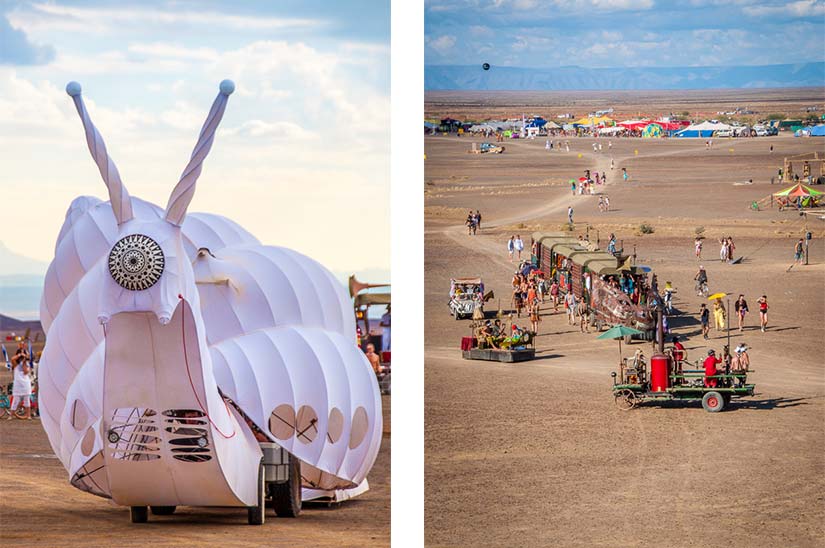
Photo credit: Sean Furlong
Legacies and Life-changingness
The first challenge of any successful event is always logistics. Building Tankwa Town from nothing in the middle of the desert, and then removing all traces of it, are huge undertakings. Keeping the event on track from the outset, smoothly growing the event from 1,000 attendees to 14,000, providing essentials (toilets and health supplies) and a city map as the infrastructural base of the event. Attention to a thousand details, which is a very familiar situation for event planners.
The second challenge of such an event is, in the words of the founders, keeping the legacy pure. Here is where the 11 guiding principles come into play. The legacy of Radical Inclusion, for example, is embodied in the AfrikaBurn logo, also known as the San Clan image. This icon, which the creators chose because it is so fundamentally African, derives from ancient land-paintings by the San (African Bushmen), who are considered the first people of South Africa. While the actual meaning of the San Clan image is unclear, in the context of AfrikaBurn it is taken to mean ‘one torso with many heads and many legs going in the same direction.’ Not only has it had a galvanizing effect on the Burn community, in 2016, when the event was visited by actual Bushmen elders, they endorsed its use for the Festival.
But to a classically divided country like South Africa, the organisers knew the challenges of inclusion might be more plentiful than the solutions. Race is only one divide; others are wealth, leisure and the opportunities they offer. So, whatever the skin colour, when you require each person at AfrikaBurn to gather everything needed to survive for a week, you are assuming privileges and abundances of leisure and goods that are just not available to everyone.
To realize an open space for Radical Self-Expression, which benefits everyone, the AfrikaBurn Outreach Committee balances Communal Effort and Radical Self-reliance by assisting underprivileged artists in their Participation at AfrikaBurn. These include providing subsidised and community tickets. They also have access grants which help underprivileged people with transport and welfare for getting to the event. The objective-within-the-objective is to break down barriers to entry, spread knowledge (Each One, Teach One) and facilitate access to the event (for those who are interested in attending).

Photo credit: Jonx Pillemer
Breaking Down the Barriers Set Up by Consumerism
Gifting and Decommodification also have their hot-button challenges. One of the many legacies of AfrikaBurn is that having to create something changes the way you look at consumption.
Gifting, for example, underscores Immediacy and Participation, in that the gift is present (immediate) and giving and accepting are participatory acts. By giving someone a gift that you made (be it cookies or crafts) and not expecting a gift in return, you are being generous. Schiess believes this to be a metaphor for the Burn experience: An open-source model, where everyone who comes to the event has to make the event and expect nothing in return. You may get stuff in return but you mustn’t expect it.
This behaviour contrasts with commodification, where the object is not “immediate” but a symbol of some other time and place (i.e., collect $5, which you can use in the future to buy a hamburger). A phenomenon that’s currently challenging Radical Self-reliance and Decommodification are “plug-and-play-and-profit” camps (also called concierge or turnkey camps), where wealthy festival-goers have been flown in and pay up to $5,000 a night to have their camp set up with all the amenities (cooking, laundry, and cleaning, etc.).
The legacy is not consumption, it’s participation
Consuming the event in such a way denies the true value and magic that individuals derive from having an active role as a participant at the event. The organisers are cracking down on these camps; in their view, keeping the commercial side out of AfrikaBurn is fundamentally important and it isn’t right that individuals are profiting from a not for profit event. Schiess thinks this passive consumption of the event is partly a result of AfrikaBurn having become a popular “bucket-list” item on many listings. This trend has gone hand-in-hand with recognition by the electronic dance music (EDM) scene, thanks to the celebrity DJs that gift their time and fly in for impromptu dance concerts.
The takeaway, however, is that creating a society without money — even for a week — is an ongoing challenge.
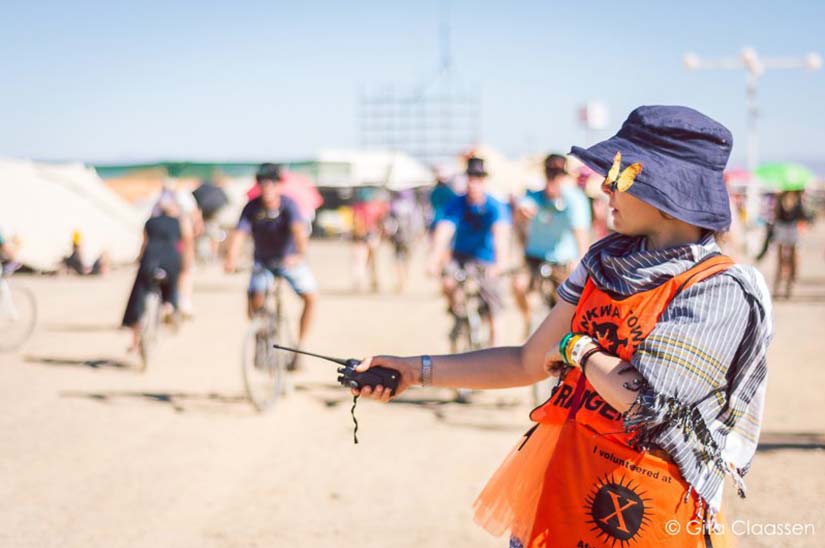
Photo credit: Gita Claassen
The Zero-Waste and No Footprint Legacy Your Events Should Strive For
Speaking of consumptive behaviour: In such a remote and primitive location, it’s easy to see how much garbage and general detritus is generated by human habitation. Leaving No Trace is such an important part of the festival. Participants are encouraged from day one to constantly police their areas for MOOP (“matter out of place”), to categorize it (wet, dry, organic, recyclable, repurposable) and to dispose of it accordingly. For participants, this mainly means returning to civilization with waste in tow; which also means living with it until that time. It’s experiential learning at its finest.
And while the final cleanup can take up to two weeks post-event to complete, having everyone pitch in together and do what they can to remove all traces of Tankwa Town from the desert floor before leaving deeply touches several of the core principles at the same time:
- It is the last Communal Effort, which, in turn, strengthens the bonds of Radical Inclusion.
- It removes Tankwa Town from the material world. In the end, there is little physical sign of everything that happened in the week prior. Instead, …
- …fixes Tankwa Town in the minds of the participants, creating a memory loop that reinforces the experience.
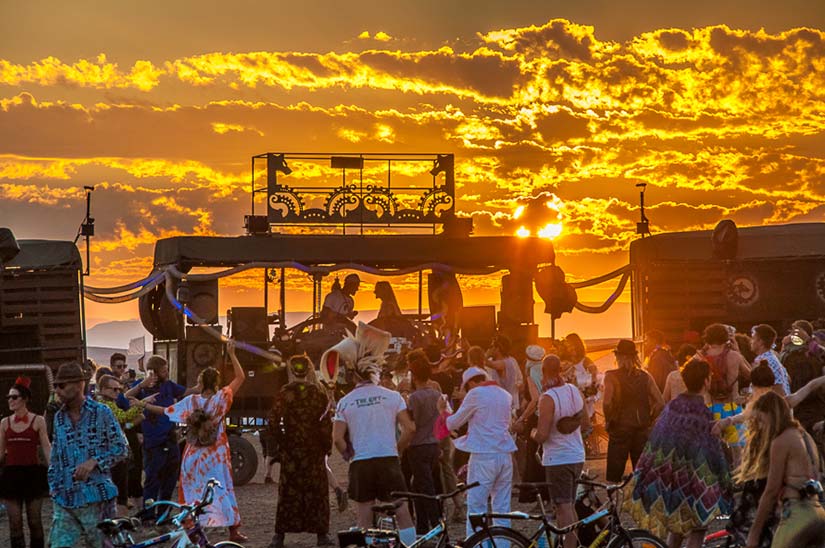
Photo credit: Sean Furlong
The Engagement Formula: Turn attendees into participants
In the beginning, finding a remote area to create a week-long arts community was difficult, especially when conservative landowners would get spooked by visions of naked hippies. Then, at the first Burn, there were about 1,000 attendees, some of whom were indeed hippies. But few of the people present for the first Burn had ever been to one, and so the event had a particularly indigenous South African flavour.
Since then, attendance has grown massively and demand outstrips the number of tickets available. The magic of the event is the variety and differences of those attending. Participants can include CEOs and ministers, along with artists, families with children and repeat Burners. In 2017, attendance was measured and it was discovered that the dominant age group was between 25 and 40. More significantly: more than a third of the total attendees were internationals.
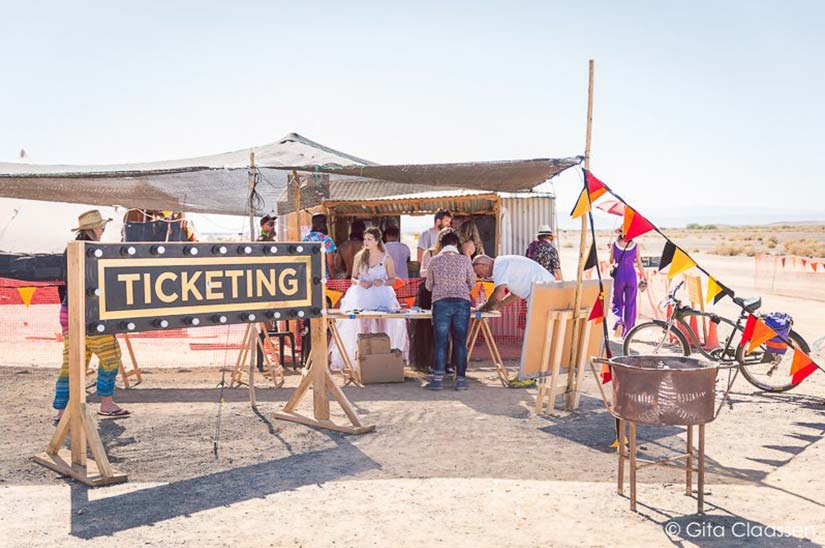
Photo credit: Gita Claassen
Now the demand for attendance is creating problems for the original location, which is capped at 14,000. Demand far exceeds the supply; in 2017, for example, 20,000 people waited for the event’s 12,000 tickets to go on sale — which sold out in two minutes.
Schiess herself believes that, with a change of venue, sustainable growth might top AfrikaBurn out at 20,000. But the issue has the organisers divided, debating such pros and cons as
- More growth: Bigger is better. The more people exposed to the Burn, the greater the number of people who are touched by the experience. We shouldn’t limit and stop people who want to participate from coming along.
- Too much growth: Growing so fast could dilute the culture and the ethos, as well as the ability to communicate that culture and ethos.
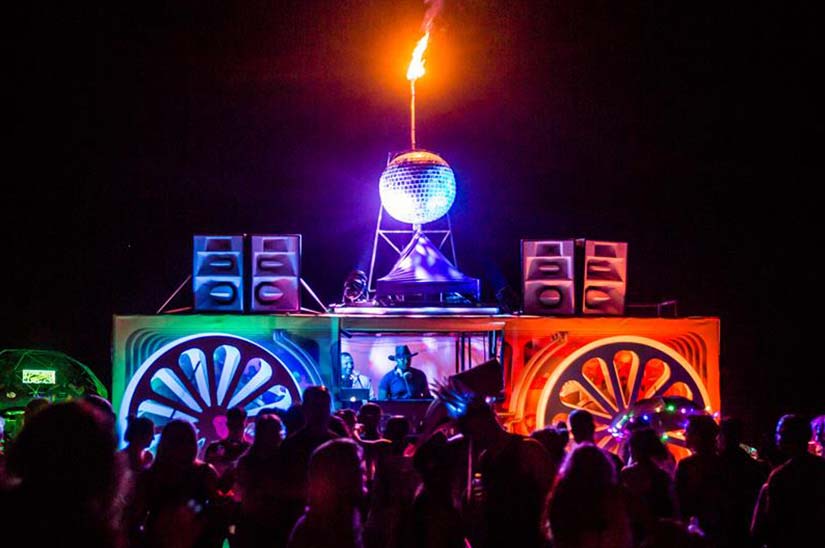
Photo credit: Jonx Pillemer
Learning from AfrikaBurn: How to scale your event, create a community, and impact the lives of your attendees
Part of the legacy is, says Schiess, curiosity, a level of bravery and a willingness to experiment. And that goes for planners as much anyone.
Whether you are looking to wield anarchy or just looking to be more innovative there are lots of takeaways and inspiration that event planners can take from AfrikaBurn:
- Learn to Burn. The best way to plan a Burn is to become a participant. AfrikaBurn added the principle ‘Each one, teach one’ so that festival participants will take what they’ve learned and pass it on, whether in the immediacy of the Burn or upon going back into the ‘real’ world. By being a Burner and adopting its culture and ethos, you’ll have a better opportunity to ‘get’ what it’s all about. Try to generate this increased buy-in from your own participants to enrich the event experience.
- Be passionate, and true to your ethos. The founders were inspired by a different type of gathering from the norm and enthusiastic to recreate a similar transformative festival in South Africa. They couldn’t imagine how huge it would become but they were always mindful of their guiding principles. When in doubt, remember your event principles or, in other words, ensure you are always true to your event objectives.
- Grow a culture. For the original organisers, replicating the ethos of Burning Man felt like exercising muscles that had become dormant — it required big efforts in visualisation and resource allocation. It also meant developing an open-source plan, where the participants who arrived must make the event and expect nothing in return. The festival goers embrace this culture and respect the ‘rules’ of being a part of it. Try to generate a movement and unique ways of working around your own event projects to differentiate from the competition.
- Volunteers are fundamental. Planners know that volunteers have become the secret weapon of meeting logistics. Along with more intensive collaborations, for example, AfrikaBurn has easy four-hour shifts where volunteers act as greeters or as MOOP (“matter out of place”) removers, picking up small items like cigarette butts, glitter and false eyelashes (who knew?) from dance floors after an event. In essence though, everyone attending AfrikaBurn is a volunteer. How can you work more effectively with your own event volunteers and change the mindset of everyone coming along to make them more proactive and there to work or give back?
- Think differently about money. Modern society has encouraged a knee-jerk urge to monetise, which is very difficult to overcome. Needless to say, if you want to change people’s perceptions about consumption, you have to start with your own. Since AfrikaBurn restricts the monetisation of the festival, its sources for generating cash are likewise restricted. In addition, it is a not-for-profit organisation, which requires financial transparency. Under the usual conditions of a festival, it pays to know one’s resources; under these conditions, it is imperative. Event planners should explore different revenue models for their events. The world and opportunities are changing – don’t be afraid to rethink traditional expectations and ways of working.
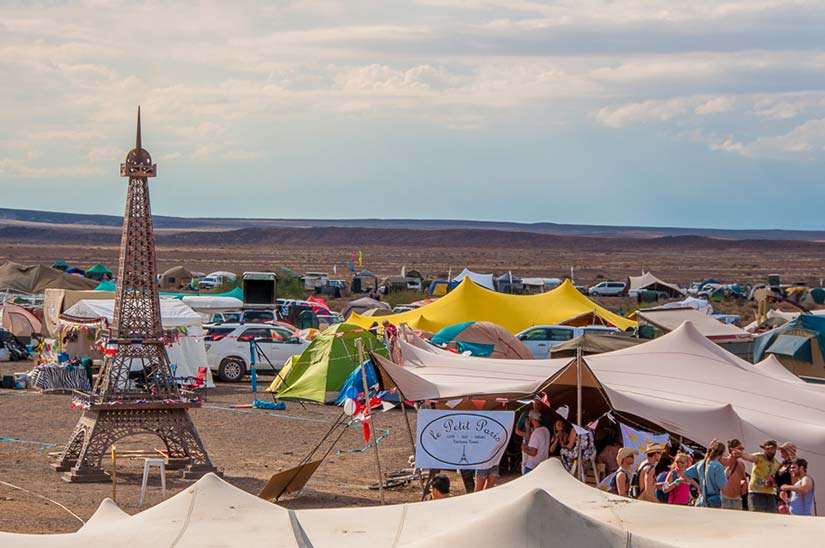
Photo credit: Sean Furlong
In Conclusion
What is created by AfrikaBurn is not only an event but an entire city, and so in addition to Participation comes Civic Responsibility. Each Burn poses various logistical challenges, including mapping a plan that ensures the safety and security of thousands of attendees (who are there, after all, to burn things). But AfrikaBurn also inverts the usual ratio of creative projects to infrastructure, which they enthusiastically do.
The organisers created the 11th principle, ‘Each one, teach one’, to reinforce the legacy of self-determination; that it was not up to the AfrikaBurn organisation to disseminate the culture, it was up to everybody. The result is that each iteration has been an explosion of creative expression. The AfrikaBurn organisers are especially proud of creating an event that has taken on a life of its own. However, for Schiess, some of the best moments she has experienced were around artwork she personally created at the festival, rather than any sense of ownership or achievement about the movement they have sparked.
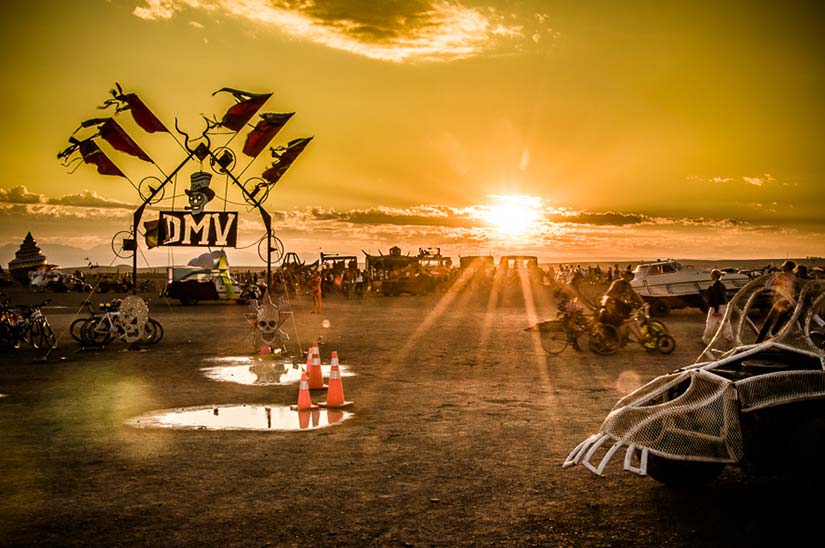
Photo credit: Sean Furlong
